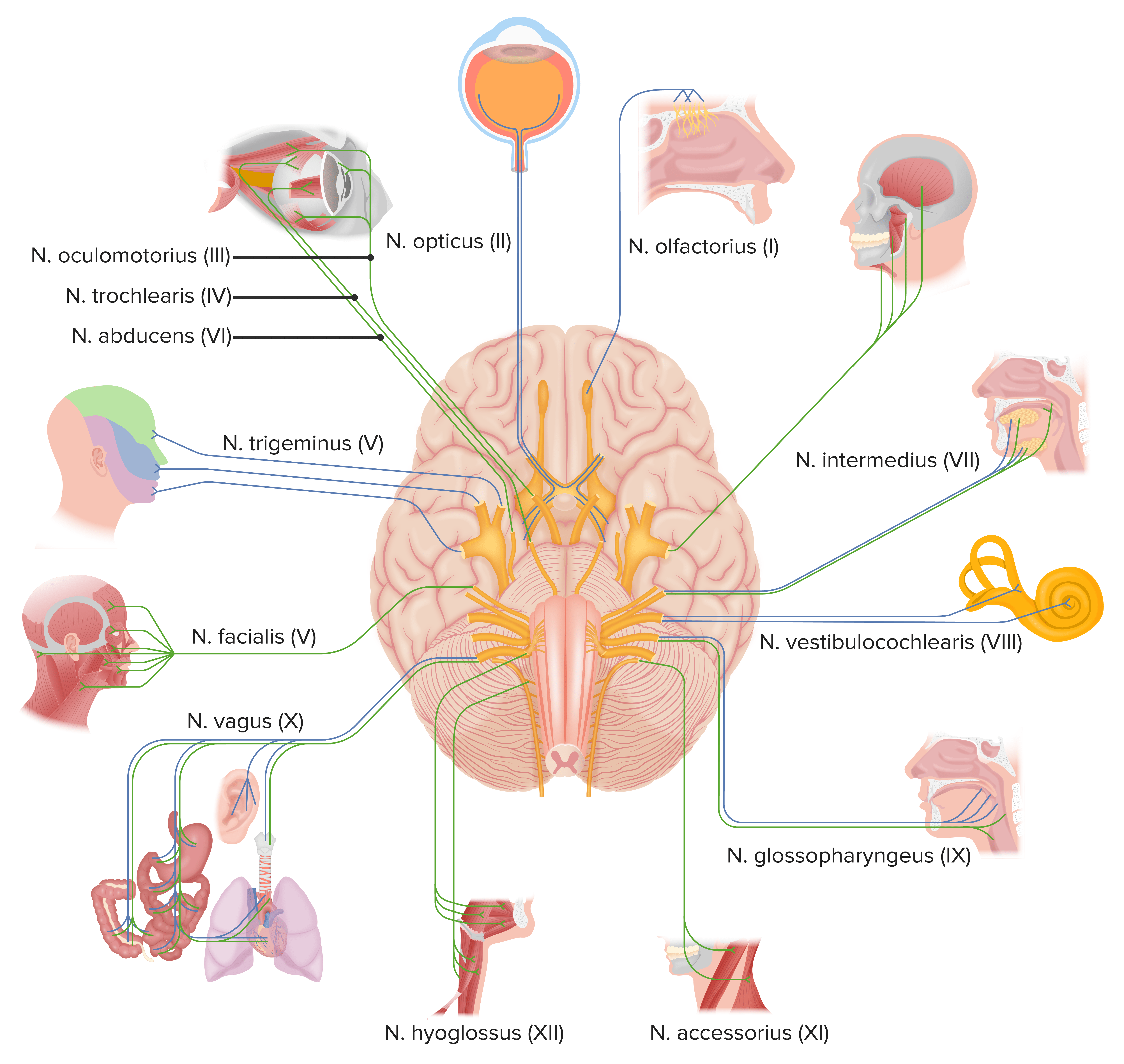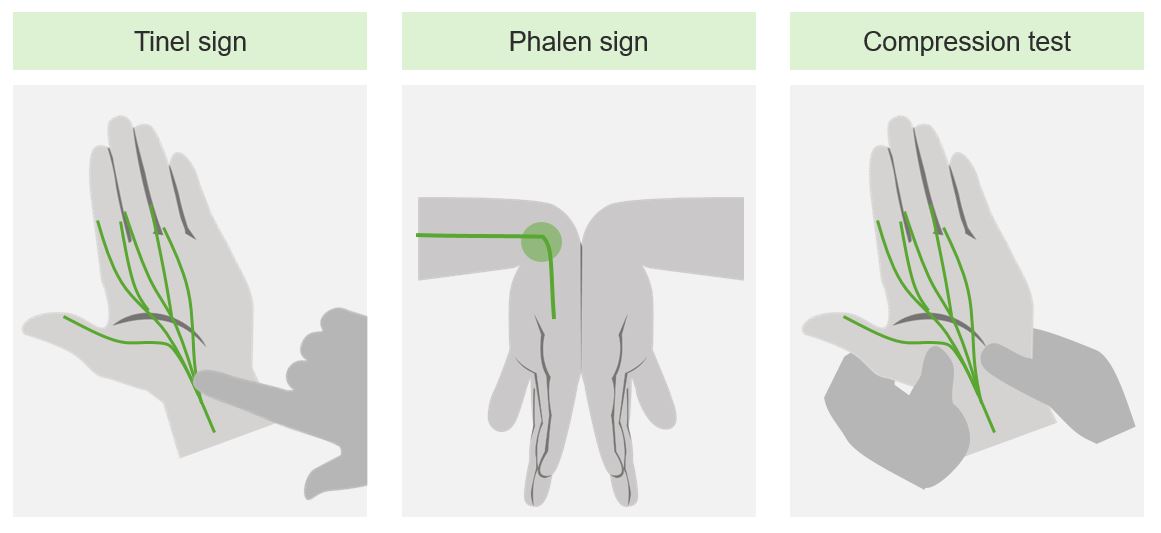Playlist
Show Playlist
Hide Playlist
OMM: Impingement Neuropathies
-
Slides Osteopathic Manipulation Treatment for Neurologic Presentations.pdf
-
Download Lecture Overview
00:00 Impingement neuropathies are a common presentation with patients. These impingements are usually due to some sort of myofascial restriction and could be potentially improved by applying OMT. So there's thoracic outlet syndrome where the nerves are being compressed as it exits the cervical spine and goes and innervates the arm. There is carpal tunnel syndrome where you have compression of the median nerve at the carpal ligament. You could have ulnar nerve compression both possibly at the elbow and the wrist. Cubital tunnel syndrome also at the elbow. You could have herniated disc syndrome pretty much anywhere along the spine but it's definitely more common in the lower cervical and in the lumbar spine. Tarsal tunnel compression could occur by the ankle and then cranial nerve compression as the cranial nerves exit the skull. So, overall treatment goals with patients that have impingement neuropathies with OMM, in general OMT is applied to try to remove those restrictions that may contribute to compression. Understanding the anatomy of how those nerves course through the body will help guide you with how you could treat patients. Using myofascial release to decrease any muscle spasm surrounding the area is helpful. There is a facilitated positional release pretty much directing treatment for lumbar discogenic pain. Counterstrain could be used for specific regions where there is muscle spasm and pain. Muscle energy to improve joint mobility and then carpal tunnel release specifically to help decrease restrictions by the wrist. 01:39 Taking a closer look at carpal tunnel syndrome, remember carpal tunnel syndrome is due to compression of the median nerve as it passes through the carpal tunnel. Signs and symptoms might be weakness of the thenar muscles. Patients may complain of decreased grip strength, loss of sensation or numbness and tingling along the distribution of the median nerve, possible atrophy of the thenar muscles. Patients may have a positive Tinel’s sign or they also may have a positive prayer or Phalen sign. We want to utilize OMT to try to mobilize the bones in the wrist. You could also utilize muscle energy to try to increase wrist joint mobility. Patients with carpal tunnel usually will have a lot of restriction to wrist extension, so muscle energy is a great technique to utilize. We have restrictions of the carpal ligament and so what we could do is to try to decrease the restrictions on the carpal ligament which is like the roof of the carpal tunnel by using balanced ligamentous tension or myofascial release and then edema definitely worsens carpal tunnel so we want to try to promote lymph drainage, free up the inlet, treat any restrictions to possible lymph flow and potentially use an upper extremity lymphatic technique to help decrease that swelling. Thoracic outlet syndrome is another impingement syndrome that could be treated with OMT. Patients with thoracic outlet syndrome will complain about pain, numbness and tingling shooting down their arm, you will suspect this more when their entire arm is hurting not just a specific distribution. 03:13 So, there are 3 key areas where the brachial plexus could be compressed as it comes down and innervates the upper extremity. So we want to take a look at all 3 areas and possibly utilize OMT to address restrictions. So, the first region where the brachial plexus could be compressed is as it passes between the anterior and middle scalene muscles where it attaches to the first rib. The second area is the costoclavicular space, pretty much the space between that first rib and clavicle. 03:46 And then the third area is by the pec minor and so these 3 areas are key areas to look at in the structures that may affect the mobility and the motion and movement is an important thing to address with OMT. So, OMT should be utilized to help address any sort of musculoskeletal spasms of the scalene muscles and the neck. You could utilize muscle energy, FPR, myofascial release. 04:15 You want to definitely treat any somatic dysfunctions of the clavicle, the upper ribs and the thoracic spine. You could use thoracic outlet release, myofascial, muscle energy, articulatory technique. All these techniques are good as long as you could try to get decrease muscle spasm and increased range of motion of these ribs and clavicle. You could utilize the pec lift, muscle energy or inhibition to try to treat the pectoralis muscles when the pectoralis muscles are spasmed. 04:43 It's going to compress and potentially impinge on those nerves as it exits into the arm. So, all these different treatments could be utilized. The main thing is to remember how the brachial plexus courses into the upper extremity and how you could address those different structures to help with these symptoms. Other neurologic conditions to consider include chronic pain syndrome such as fibromyalgia and reflex sympathetic dystrophy. These are more broad-based, patients that come in with pain in multiple regions or with reflex sympathetic dystrophy, patients that had some sort of trauma which then has led to chronic pain. So, in general OMT could be applied to help treat our patients with chronic pain. Treatment goal of OMT is to try to approach the patients of all models and trying mostly passive indirect techniques. Most of the times patients with chronic pain syndrome don't tolerate acute active techniques. So utilizing myofascial release or facilitated positional release, counterstrain, balanced membranous tension, balanced ligamentous tension and cranial OMM are good approaches for these patients and so these patients usually will benefit from an approach where you're trying to balance autonomics, decreasing any sort of biomechanical strains and then promoting circulatory and lymphatic flow, decreasing the overall allostatic load and also to counsel them with how to deal and manage their chronic pain issues. So in conclusion, there is definitely a role for OMT in a variety of neurologic conditions. There have been multiple case reports published, some pilot studies looking at how OMT could help with these neurologic conditions but overall if you understand the basic anatomy and physiology behind these different neurologic complaints and issues and apply OMT utilizing the 5 models you could definitely help benefit patients with these different neurologic conditions.
About the Lecture
The lecture OMM: Impingement Neuropathies by Sheldon C. Yao, DO is from the course Osteopathic Treatment and Clinical Application by System.
Customer reviews
5,0 of 5 stars
| 5 Stars |
|
5 |
| 4 Stars |
|
0 |
| 3 Stars |
|
0 |
| 2 Stars |
|
0 |
| 1 Star |
|
0 |






